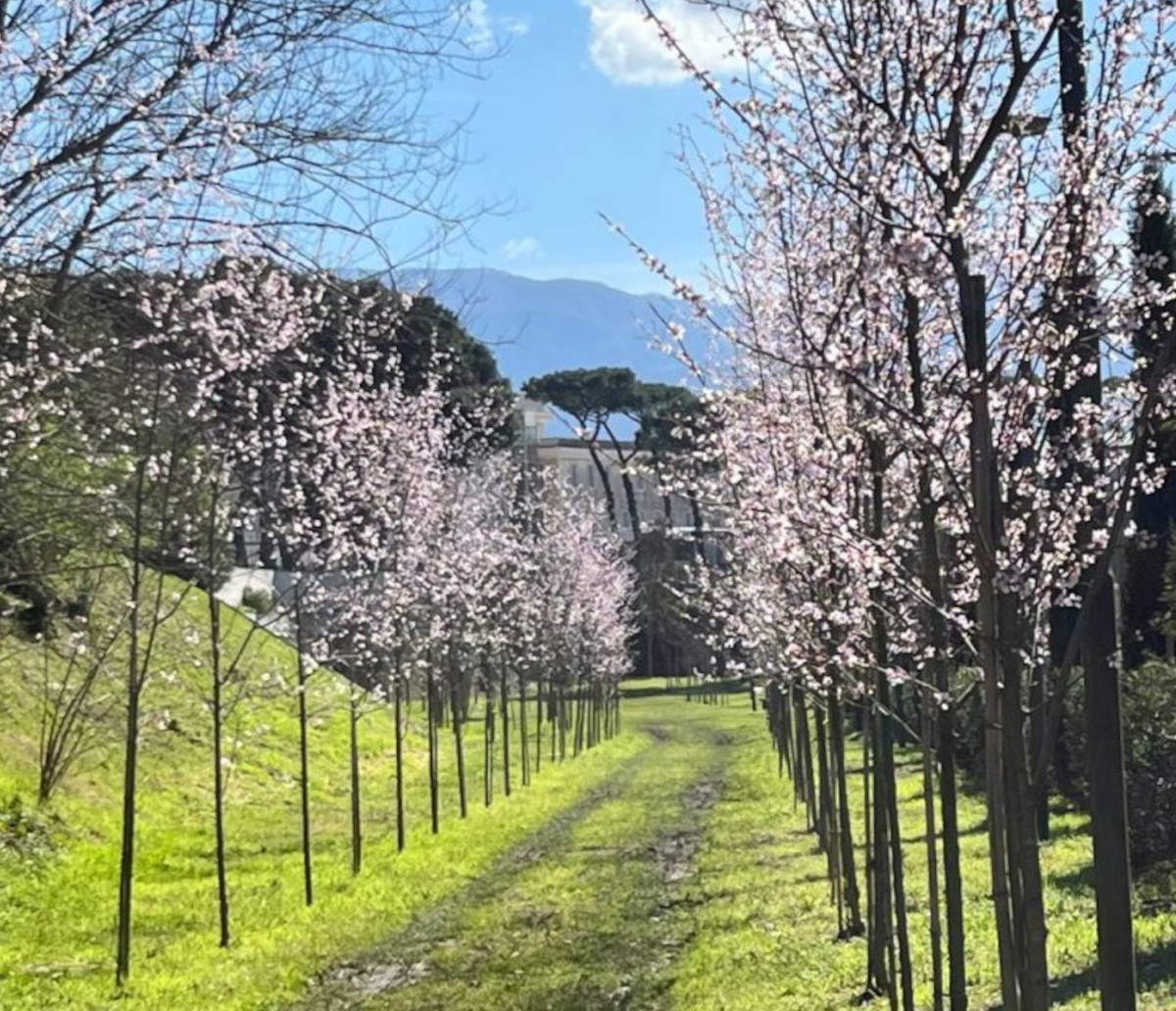Since March 14, the Pompeii Archaeological Park has opened to the public the green route outside the walls that, from Piazza Anfiteatro, skirting the Fondo Pacifico necropolis through the Sacred Wood and the Almond Tree Walk, runs along the walls and the outer perimeter of the Amphitheater to Porta Sarno, joining Via dell’Abbondanza. An alternative route in the green, inclusive and accessible to all, to delve into the ancient city and discover new places. In the coming weeks, the path will also be equipped with fully inclusive rest, recreation and experiential play areas.
The area has been the subject of a broader program of reforestation of the Pompeii Archaeological Park sites and for the enhancement of biodiversity that, thanks also to the technical and operational support of Arbolia, a benefit company of the Snam group created to develop new green areas in Italy, and the economic contribution of Sa.gest, a global service technology company active in the industrial and energy sectors, will see more than 7,000 trees and shrubs of the Flora Pompeiana planted over the course of the year in new wooded areas in the green crown surrounding Pompeii and also forming the Sacred Wood of Porta Anfiteatro. The Sacred Wood is a forest inspired by one of the earliest sacred places in the Mediterranean and ancient Rome, the lucus, with about 400 holm oaks, plane trees, tamarisks, elms, oaks, almond trees, placed following the sole rule of the suggestion that the place offered to the planters, with the throwing of white pebbles, staking with river reeds and tying of raffia to form patches and glades with rose bushes, arbutus to represent immortality, myrtles, lentisks.
The extramoenia green route is a vast green area of more than 8,500 square meters with strong archaeological landscape values, already partly used in the past as a rest area. Here visitors will be able to linger and relax in an environment where nature will offer new views and new paths, nesting sites and shelter for wildlife, observation points, special plants with a thousand colors and scents. All in accordance with philological rules of conservation, protection and enhancement of the archaeological landscape. The tree and shrub species provided by Arbolia were selected by the Pompeii Archaeological Park from those present up to the time of the eruption in 79 AD, through studies and experiments on the naturalistic and anthropic components of the ancient and modern archaeological landscape. The intervention is coordinated by the “Green Care” Area of the Pompeii Archaeological Park - Area Manager and Regiones Extramoenia Paolo Mighetto, First Gardener of Pompeii Maurizio Bartolini with Martina Sabia and Carlo Coppola - and represents a first part of the reforestation and biodiversity management program of the Pompeii Archaeological Park, of which the Framework Agreement for the management and maintenance of greenery entrusted to Angeloni Angelo Company is a part.
The reforestation interventions were also carried out thanks to the technical sponsorship and agreement with the Arbolia Benefit Society, in line with its promotion of concrete actions to combat climate change, improve air quality and create green areas for the benefit of local communities. The intervention was made possible thanks to the contribution of Sa.gest, a global service technology company operating in the industrial and energy sectors. For Arbolia, this is one of two forestation interventions that the benefit company is developing in the Pompeii Archaeological Park, such as the Orchard Forest of the Villa of Cicero. In addition to planting, the benefit society is also taking care and maintenance of the trees for the first two years, relieving the public administration of the related burdens.
“We are opening to fruition a green lung that is on the border between the ancient and modern city of Pompeii, as part of the archeouban regeneration that the Park is pursuing and that is moving toward an increasingly strong integration with the territory,” said Pompeii Archaeological Park director Gabriel Zuchtriegel. “Families, adults and children can enjoy these spaces to spend the day immersed in nature, landscape and history. The My Pompeii card, free Sundays and free and reduced rates for young and younger visitors, among other things, allow them to visit the site whenever they want. But above all, the expansion of visiting spaces offers the possibility of accommodating the large number of visitors increasing in Pompeii, allowing us to redistribute flows and relieve human pressure in certain areas.”
 |
| Pompeii Archaeological Park opens greenway outside the walls, inclusive and accessible to all |
Warning: the translation into English of the original Italian article was created using automatic tools. We undertake to review all articles, but we do not guarantee the total absence of inaccuracies in the translation due to the program. You can find the original by clicking on the ITA button. If you find any mistake,please contact us.